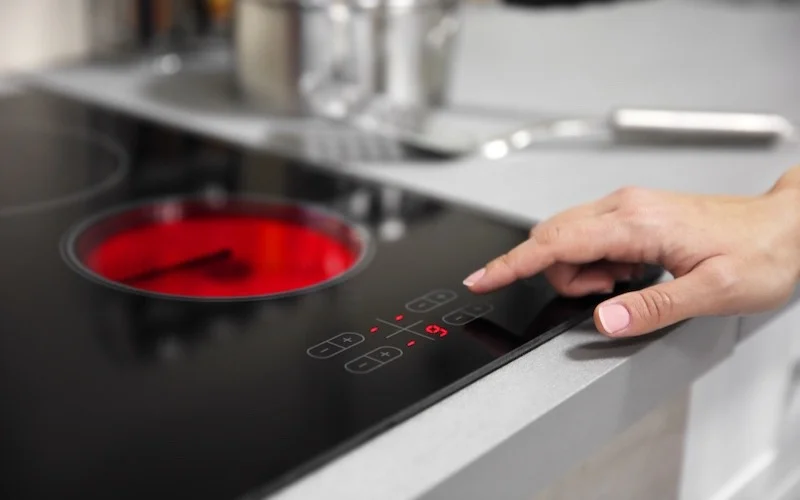When you encounter the problem of a cooktop not heating, it can disrupt your meal preparation and potentially lead to frustration. In this article, we will explore common causes for this issue and guide you through the troubleshooting process and repairing your Bosch electric cooktop.
Importance of Addressing the Problem
- Dealing with an electric burner that isn’t heating is of utmost importance. It not only affects your cooking routine but can lead to safety concerns and potential appliance damage. Timely identification and resolution of the issue can prevent accidents and ensure your stovetop functions as intended.
Common Causes of Electric Cooktop Not Heating

1. Faulty Burner Element
- A common culprit for an electric burner not heating is a malfunctioning burner element. The burner element is the heating coil responsible for generating the heat necessary for cooking. Over time, these elements can wear out or become damaged, leading to heating issues. Signs of a faulty burner element include visible breaks or burns on the element’s coil. When this happens, the element needs replacement to restore proper heating.
2. Electrical Connection Problems
- The electrical connections within your stovetop are crucial for the proper functioning of the burner. Issues with these connections, such as loose or burnt wires, can disrupt the flow of electricity to the burner. This interruption can prevent the burner from heating as it should.
3. Control Switch Issues
- The control switch is responsible for regulating the temperature of the burner. When it’s faulty or damaged, it may not send the necessary input to activate the burner element, resulting in heating problems. This component is essential for setting the desired cooking temperature, and any malfunction can lead to an electric burner that doesn’t heat properly.
4. Cookware Problems
- Sometimes, the source of the issue isn’t the electric stovetop itself but the cookware being used. Incompatible or damaged cookware can adversely affect the transfer of heat from the burner to the pan, causing inadequate heating. The bottom of pots and pans should be flat and in good condition to ensure proper contact with the burner.
5. Burner Receptacle Troubles
- The burner receptacle plays a critical role in connecting the burner element to the stovetop’s electrical system. When issues arise with this component, it can disrupt the electrical connection, leading to heating problems. If the receptacle is damaged or malfunctioning, it needs professional attention to ensure the electrical connection is secure and enables the burner to heat correctly.
Troubleshooting and Solutions
1. Safety Precautions
Before you embark on the troubleshooting process, it’s imperative to prioritize safety. Start by taking the following precautions:
- Turn off the stovetop.
- Disconnect the stovetop from the power source.
- Exercise caution when dealing with electrical components.
3. Testing the Burner Element
A faulty burner element is a common cause of an electric burner not heating. To determine if this is the issue, follow these steps:
- Swap the malfunctioning burner element with another one from the stovetop.
- If the newly placed element heats up, you’ve successfully identified the problem, and you should replace the faulty element.
4. Inspecting Electrical Connections
Examine the electrical connections that lead to the problematic burner. Look for the following:
- Loose wires.
- Burnt wires. If you identify any of these issues, consider the following actions:
- Tighten any loose wires or connections.
- Replace any burnt or damaged wires to ensure a secure electrical connection.
5. Diagnosing Control Switch Problems
If swapping burner elements does not resolve the heating issue, it’s time to focus on the control switch. Here’s what to do:
- Inspect the control switch for any signs of damage or malfunction.
- If you suspect control switch issues, it’s advisable to consult a professional technician for a thorough inspection and potential replacement.
6. Evaluating Cookware Compatibility
In some cases, the source of the heating problem may not lie with the stovetop itself but with the cookware you’re using. Follow these steps:
- Verify that the cookware you are using is compatible with your stovetop.
- Ensure the cookware is in good condition, with a flat and undamaged bottom to facilitate proper heat transfer.
7. Addressing Burner Receptacle Issues
If none of the previous troubleshooting steps resolve the heating problem, it’s time to consider the burner receptacle. Here’s what you should do:
- If the burner receptacle is causing the issue, it can be replaced by a professional to ensure the electrical connection is secure and facilitates proper heating.